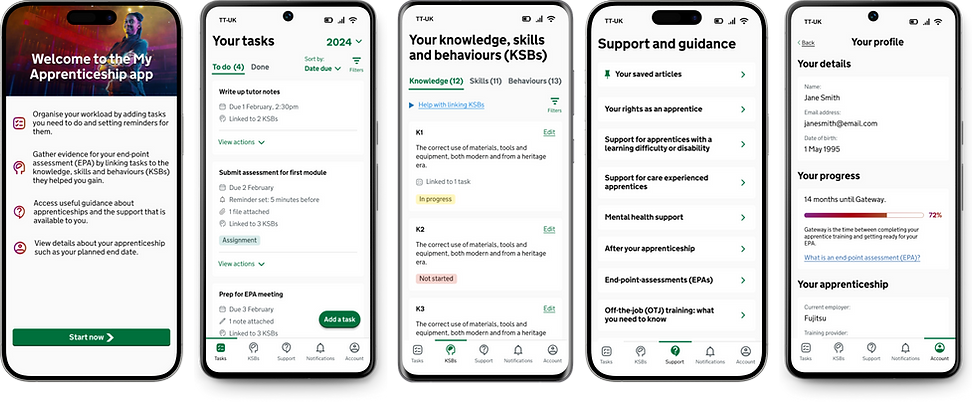
My Apprenticeship App
Department for Education
Overview
I led the UX & UI design in an Agile development team for an iOS/Android PWA mobile app targeted at the 700,000+ apprentices in the UK. This project went through a full life cycle of research, concept creation and iteration using the Govt Design System (GDS); high fidelity prototyping into user testing and finally build. The design was met with widespread positivity with the DfE, exceeding expectations and is aiming for full go live late 2024/early 2025.
My role
Lead Interaction Designer (UX & UI)
UX & UI responsibilities
Competitor analysis
Best practice analysis
Ideation & concept creation
Figma UX & UI design using auto-layout
Low fidelity prototyping
High fidelity prototyping
Demo presentations
Workshop management
Stakeholder management
Liaising with development for build
Project outcomes
After pitching a proof of concept to senior project stakeholders, we secured budget investment to design and build
Successful beta launch Sept 2024
Aiming for public go live late 2024/2025
Introduction
Strategic context
It was determined that there was significant potential for an app to facilitate a direct relationship with the apprentice during their apprenticeship. Various problems identified through prior research (achievement rate, apprentice experience, user workshops) led us to this conclusion. Previous research helped us identify potential capabilities to help prioritise. In October 2023, the delivery team started a discovery phase to explore these ideas further.
Product vision / mission
Develop an app that will support apprentices, with the goal of contributing to raising the achievement rate. Primarily, this will focus on apprentice users and be targeted at improving achievements, satisfaction and apprentice understanding.
Qualitative and quantitive user research
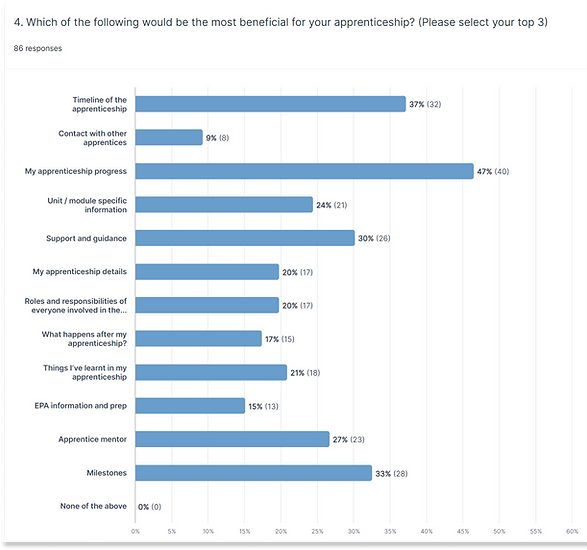
User research was done before and after I joined the project via a series of workshops, one on one interviews and quantitive surveys. This is an example of one of the surveys that was conducted.
This research informed a hierarchy of user needs listed below. I always try to understand the hierarchy of user needs before I start designing, to inform the design priorities.
These were the important user needs we identified:
-
Help me understand my apprenticeship progress
-
Show me a timeline of my apprenticeship
-
Give me support and guidance
-
I want to feel part of an apprentice community
-
Give me contact to a mentor
Design ‘inspirations’ mood board
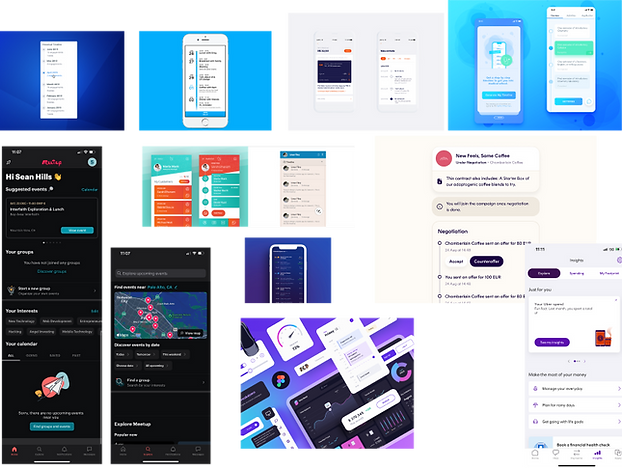
At the beginning of any design process I always look for design inspiration by looking at examples of industry best practice, existing products in the same school of products, so in this case other Gov UK apps and finally, examples of designs with similar features to the ones the team and I are confident we want to explore.
This is a great way of developing good ideas and driving a team conversation about product vision, whilst hitting the ground running with new concept ideas.
This is an example of a mood board I had collated based on feature ideas the team had discussed from the user research.
First wireframe concepts
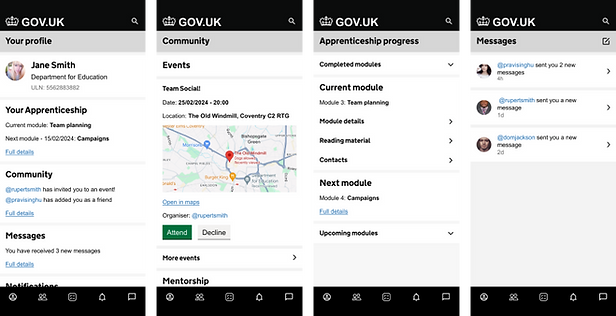
With the direction from the user research, I began creating low fidelity conceptual designs. These were basic wireframe designs created to get initial user feedback on whether we were going in the right direction with the features and vision.
User testing

Throughout the duration of the year-long project I built several high fidelity Figma prototypes.
We used these prototypes to conduct user testing and steer the design iterations towards a set of features that would best meet the user needs, but there were some technical challenges...
Design iterations and challenges
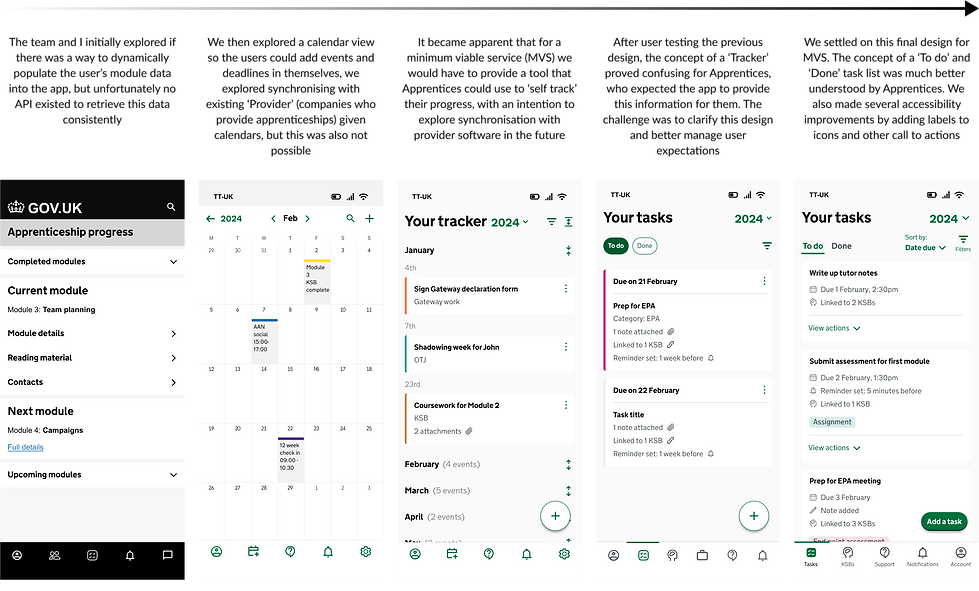
The final prototype build on Figma
Styled using the Govt. Design System and built on Figma
Project conclusions
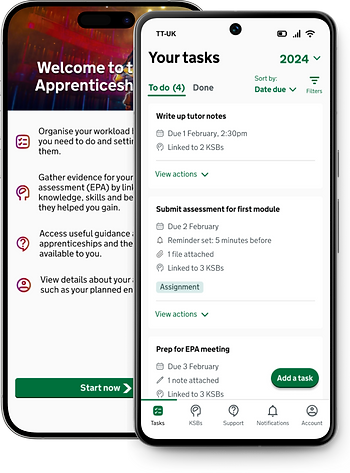
-
Successful budget investment after proof of concept demo to senior stakeholders
-
I led both the UX and UI design during the full project lifecycle from research through to design and build in an Agile Scrum team
-
Beta testing going live from September - December 2024
-
Public beta and public go live set for 2025
-
Target - 700,000+ Apprentices across the UK
Explore More Projects





